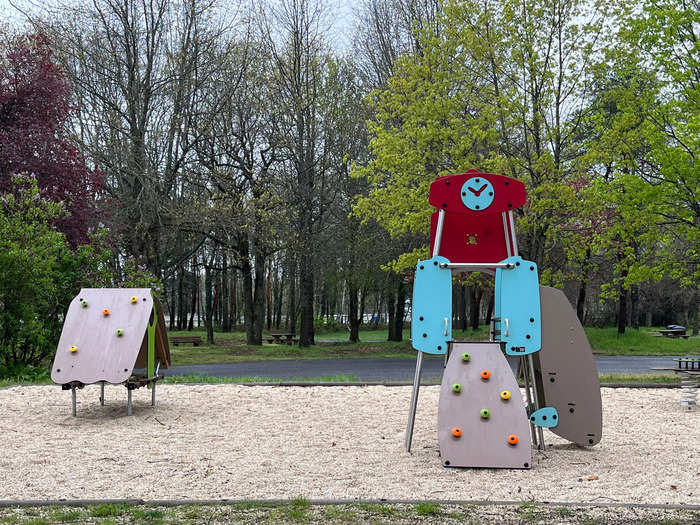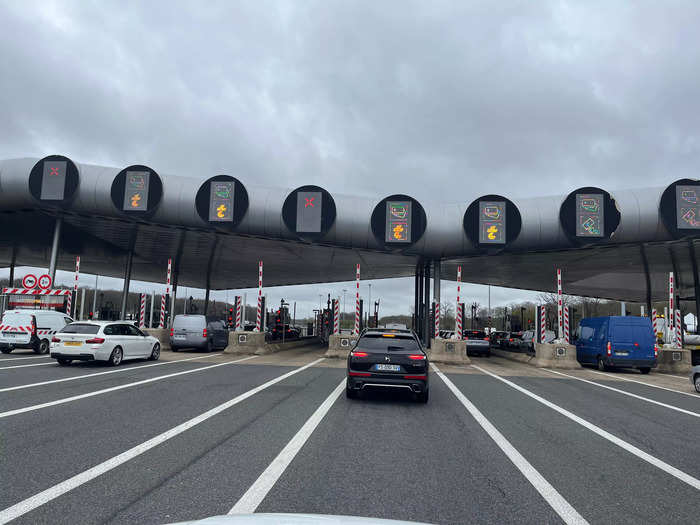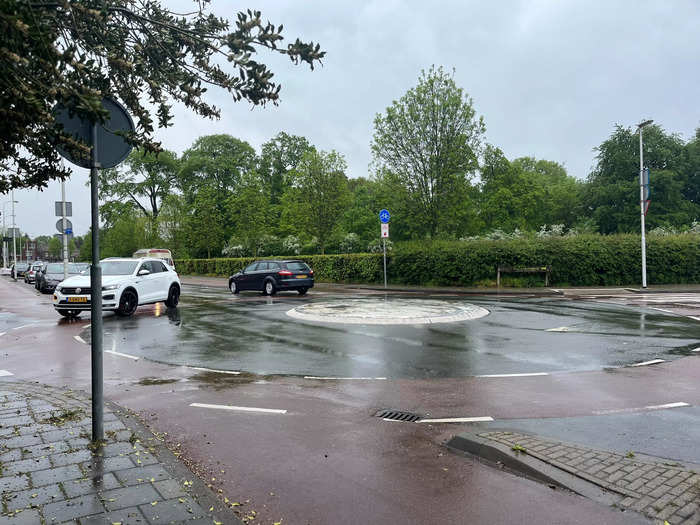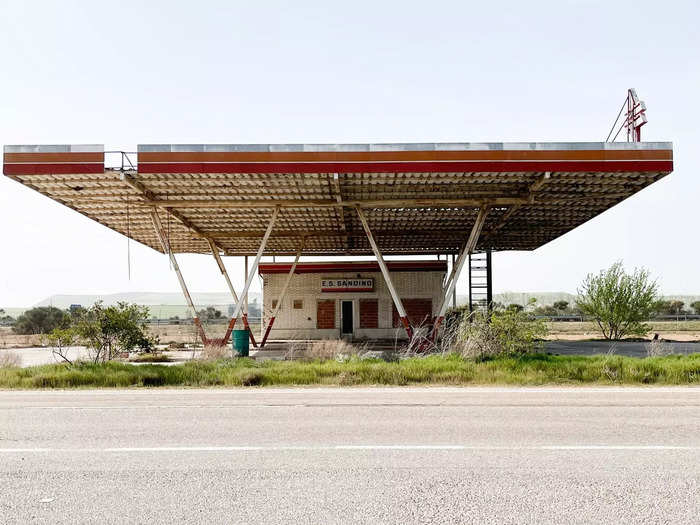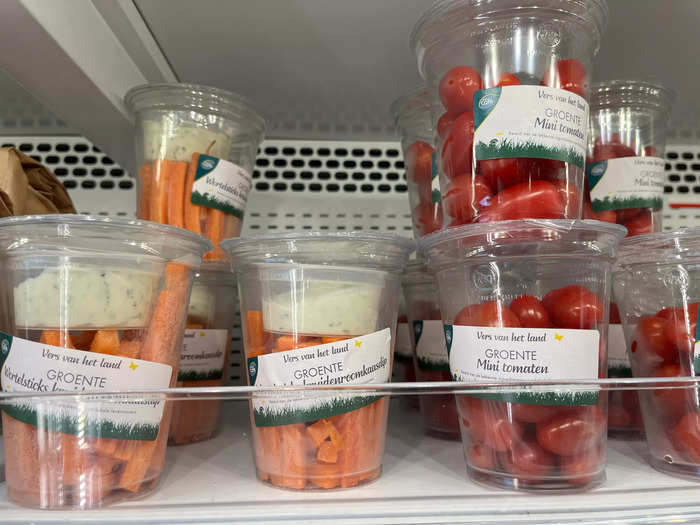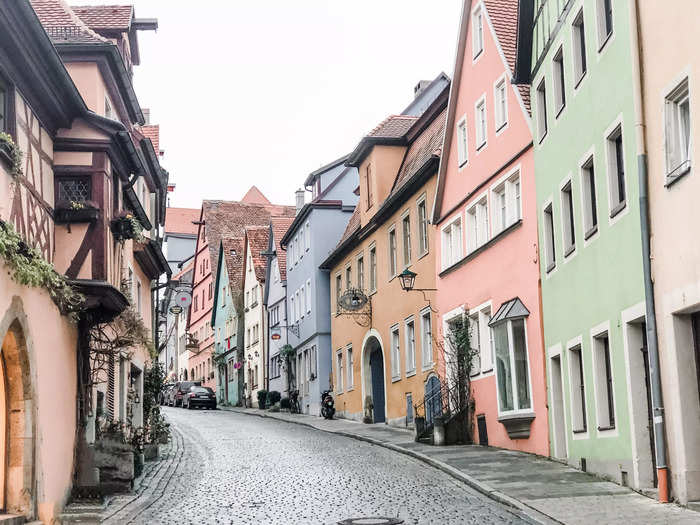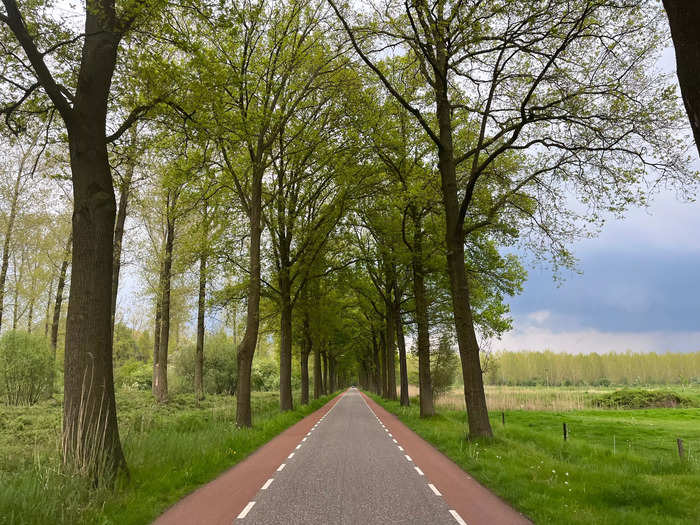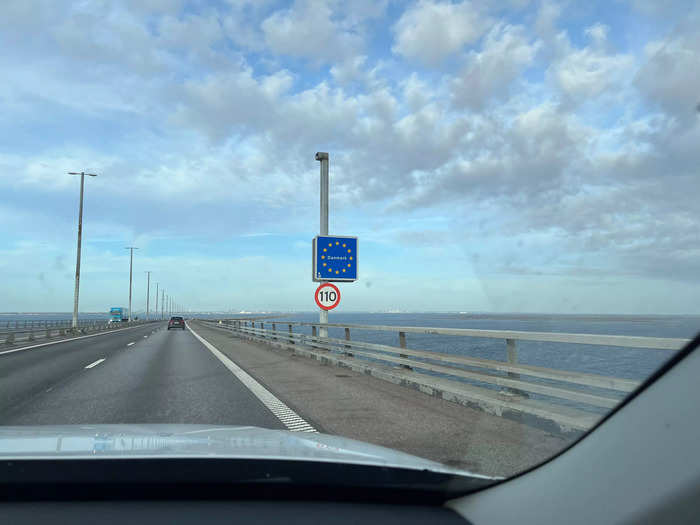My family has gone on many road trips in the US and in Europe.Lana Katsaros
- I've spend hundreds of hours on road trips in the US and in Europe.
- I love European road trips, but gas prices are way more expensive than they are in the US.
When my family lived in New York, we'd take road trips all the time, especially down to Florida to see family. I-95 South was basically the entire trip, and I knew the stops along the way by heart.
As my family grew, we opted for car travel instead of plane travel more and more. When our son was still an infant, we took a 3,200-mile road trip, and I think that's where it really clicked that we were road-trip people.
Eventually, we ended up road tripping during our first European vacation since it was less stressful for us. Since then, I've spent hundreds of hours road tripping through most of Western Europe.
Even though I didn't realize it at first, it's become clear there are some big differences between the road trips I've been on in the United States and those in Europe.
Rest stops are an event in some countries like Spain and France — we've seen campsites, playgrounds, and even parties
Many rest stops in Europe we've encountered have had special parks or perks. Lana Katsaros
In the US, travelers generally try to get in and out of rest stops as quickly as possible but in Europe we witnessed full rest-stop parking lots with people just hanging out and socializing.
The first time we saw what appeared to be a party at a rest stop in Europe was when we were entering Spain in 2019.
At first, we were confused — maybe it was an overload of tourist buses or some huge event was happening nearby and everyone needed gas. Nope, it was a birthday party taking place roadside with cake, decorations, and a gift table.
Sights like this one became somewhat common throughout our road trips in Europe. We've seen hundreds of people gathering at highway rest stops in Europe in the summer. From full-blown barbecues to campers fully set up, to playgrounds filled with children, rest stops often feel like a popular, local park.
This was particularly true in France where some of the stops were sprawling with a park-like setting, including small man-made lakes.
Gas is way more expensive in Europe than it is in the US.
Gas prices in some European countries are almost triple what you can find in the US. Lana Katsaros
We instantly fell in love with European road trips, but sadly the gas in Europe is soul-crushingly more expensive than it is in the States.
Gas in some European countries can be more than double the price per gallon as gas in the US, in part due to Europe's high taxes on gasoline. In places like Germany, France, and Italy, you can expect to pay over $7 per gallon.
With such expensive gas, we plan every moment of the trip with precision. One wrong turn can not only cost us hours, but also big bucks if the next exit is far away.
France has more tolls than anywhere I've ever been, but other European countries like the Netherlands hardly have any.
The tolls in France can add up. Lana Katsaros
While driving on the autoroute (the French highways) expect to pay a lot of tolls. About 76% of the autoroutes are toll roads, and it can feel like there's a toll booth every few minutes.
These tolls are usually not cheap. They can range from a few euros for Class A cars to over 30 euros at a single toll booth. Fortunately, perhaps because of the high price of road travel, we've found French roads to be mostly traffic-free with the exception of Paris and its vicinity.
On the flip side, the Netherlands has fantastic free roads most of the time. Only Kiltunnel and Westerscheldetunnel highways will charge you a toll — the other highways tend to be flat, free, and flanked with pretty stellar scenery.
Get used to traffic circles and not making left turns.
Roundabouts can be found all over Europe. Lana Katsaros
In many European countries, you will learn about traffic circles rather quickly. Sometimes you won't see a traffic light for miles and miles and only see traffic circles. They're both my friend and also somewhat of an annoyance.
Traffic circles are great for when you are heading in the wrong direction and need to turn around, which is pretty common for us. They're also great for when you need to make a left turn because you are guaranteed to not need to wait for oncoming traffic.
Yes, you will encounter a left turn here and there, but traffic circles are the norm in Europe. Embrace them.
I've found that roadside bathrooms in France aren't quite ideal.
My advice when road tripping in France would be to bring your own toilet paper and be mentally prepared to squat. Lana Katsaros
I have a 20-year relationship with France, and I have yet to find an acceptable roadside bathroom. The toilets have been an experience in and of itself for me. For starters, I've learned to not expect a toilet seat.
Once I had to position my feet in the provided footprints, pee in a dug-out hole in the ground, and pull a rope dangled above my head to flush. Let's just say I have never needed to pee in a hole in the US.
I've also had to pay to get access to many public toilets in France — but pay toilets are actually illegal in much of the US.
We've found a lot more healthy snack options at European rest stops.
I can't say I've often found vegetables at rest stops in the US. Lana Katsaros
One of my favorite things about road trips in Europe is the snacks.
In the US, I've found many rest stops are primarily stocked with junk-food options, so it was striking to see more healthy options in almost every European country we've driven through.
Throughout Europe, I saw rest stops selling deli options that looked like they came from my local health-food store. I've found crudités, snacking olives, and even fine cheeses as snacking options.
Of course, each country's offerings vary, but I can usually expect to find lots of fruit, nuts, and prepackaged snacks.
I can count on one hand how many times we have been in traffic.
An empty road in a small town in Germany. Lana Katsaros
Again, I suspect the lack of traffic has to do with the high price of road travel in Europe. I've driven through multiple European countries with no traffic and have even gone long stretches without seeing another car on major roadways.
Considering the high price of gas, it's a relief we can usually expect minimal-to-no traffic during a road trip in Europe. The only time we've really experienced traffic is when we've gotten close to Paris.
My partner and I have never experienced road rage in Europe.
Some European roads are incredibly peaceful. Lana Katsaros
In my experience, we're more likely to get more road rage from a Dutchman on a bicycle than anyone driving a car during our European travels. Crossing a cyclist is never a good idea, and you will hear an earful, as we have witnessed many times over in the Netherlands.
Other than that, we've never seen motorists have it out. Perhaps an extended honk here and there, but very rarely. It seems road rage does not exist in the same way we have witnessed in the States where it's quite common.
I've learned that a honk in Europe is usually meant to be informative and not aggressive.
In the US, some honks have a different meaning. Lana Katsaros
In the States, a honk can mean a lot of things — but in Europe, it's safe to assume someone is just trying to inform you of something.
In many cases, they might be trying to alert you that they are coming up next to you or that you're doing something wrong, like turning down a one-way road. Sometimes drivers also flash their high beams to communicate with other cars.
This definitely took some getting used to since honks in the US can commonly mean someone thinks you're driving too slow, going too fast, or are just doing a bad job.

